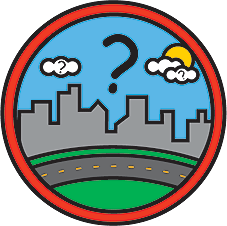How Do You Address Environmental Concerns While Building Interstate Road And Bridge Projects?

Roads are a vital part of our daily life. For example, you probably use roads to go to school each day while your parents may use roads to go to work, to the supermarket, and to the shopping mall. Maybe you have taken a family vacation by road. You also use roads even when you don't realize it. Trucks are constantly criss-crossing the country, by day and night, carrying all sorts of products to the stores where you and your family will buy them. If you think about all the ways you use roads, you will see how important they are.
At the same time, roads can cause environmental problems. We really became aware of these problems in the 1960s and the 1970s. Until then, most road projects involved improving existing roads—for example, paving a dirt road or widening a road. In the 1950s, we began building the Interstate System across the country. Because these major highways had four or more lanes and required extra land so they could operate safely and be expanded some day, they usually had to be built on a new location. In some cases, this meant going through farms, forests, parks, cities, and other areas that are environmentally or socially sensitive.
While many projects were popular, people protested to change, to move, or to stop some Interstates. Controversies erupted across the country, with protesters arguing that the planned highway would damage the environment—kill endangered species, damage wetlands, or destroy farms or parks or forests. In cities, people protested that the highways would destroy their neighborhoods or businesses or encourage people and businesses to move to the suburbs, leaving the city with less tax revenue. As The New York Times put it, "The countryside is leveled and rolled and graded. The road-builders march—imperially, relentlessly, inexorably [means: can’t be stopped]—across stream, meadow and woodland, through parks and nature preserves . . . through private homes, businesses and historic sites."
These controversies were hard to settle because often the highway was needed; but finding a route that would not damage the environment or the community was hard.
Because of concerns about what highways, dams, and other public works projects were doing to the environment, the Congress passed the National Environmental Policy Act of 1969 (called “NEPA,” which is pronounced KNEE-pa). President Richard M. Nixon signed NEPA on January 1, 1970. The law created the Council on Environmental Quality and required the Federal Government to probe deeply into the environmental consequences of its actions. As a result, before a new highway can be built, its social, economic, and environmental impacts must be studied. If the impacts would be harmful, the project must be changed to reduce or eliminate the harm; in other cases, highway projects were abandoned because the impacts were too severe.
NEPA was a major turning point for the Interstate highway program. It gave us a framework for studying proposed projects—for changing them where needed and making sure the public has an opportunity to comment. Thanks to NEPA, we have learned a lot about how to build highways, including Interstates, that protect the environment or make it better. We still face controversies because it is sometimes difficult to improve our transportation network without affecting the environment. But overall, the highways being built today are much better suited to the Nation’s needs than would otherwise have been the case.
---
If you would like more information about highways and the environment, we suggest you check the July/August 2003 issue of Public Roads magazine. Here’s a link:

